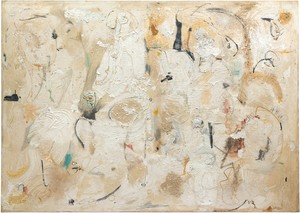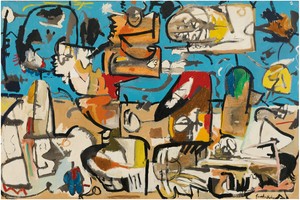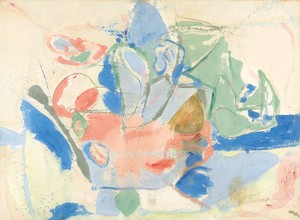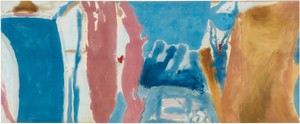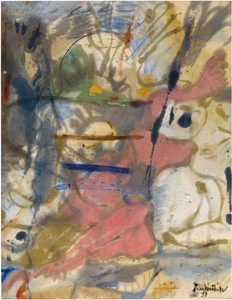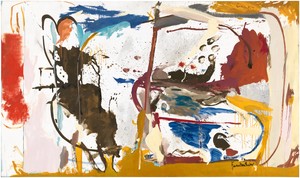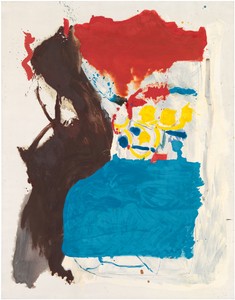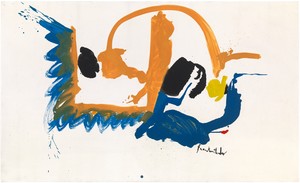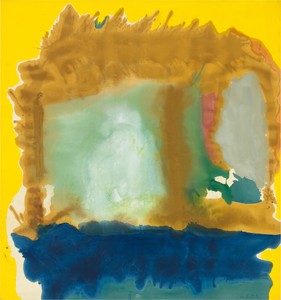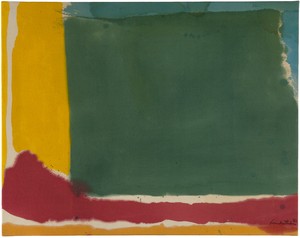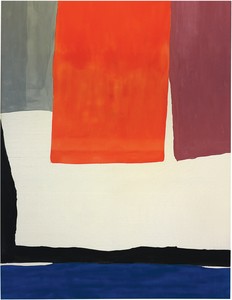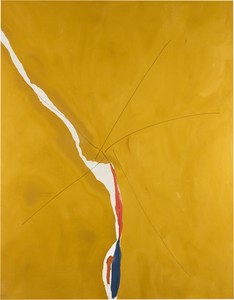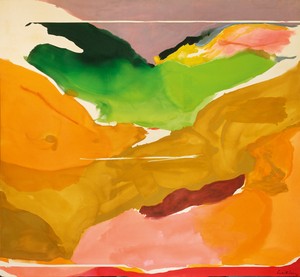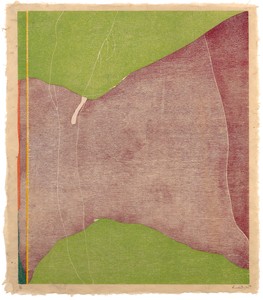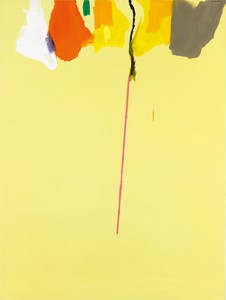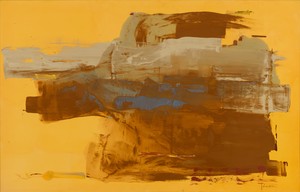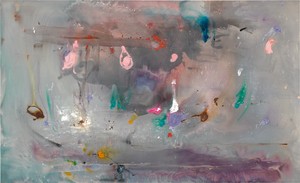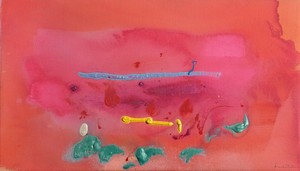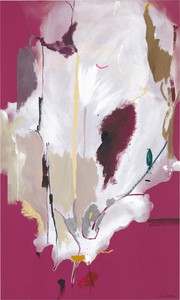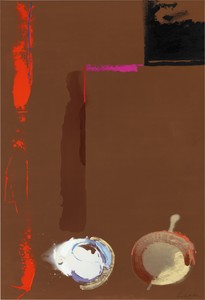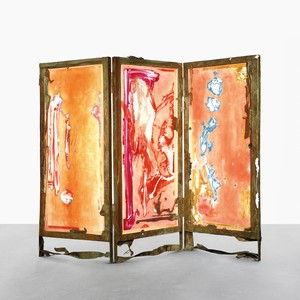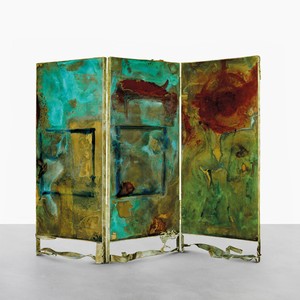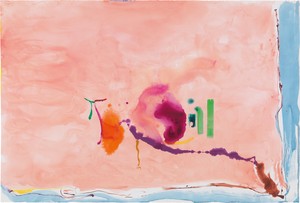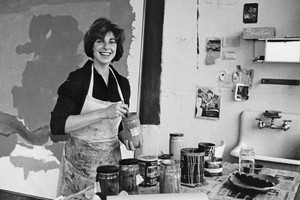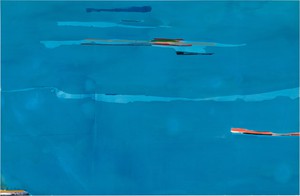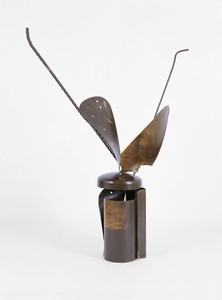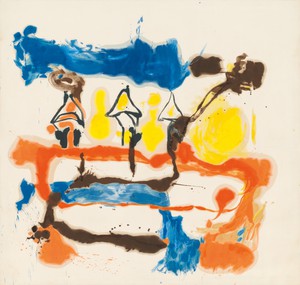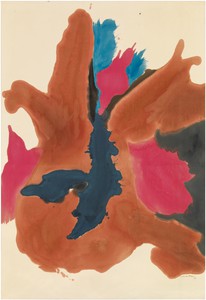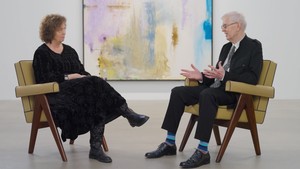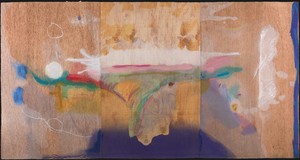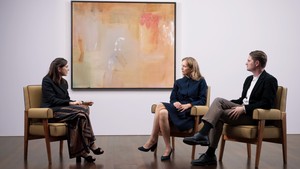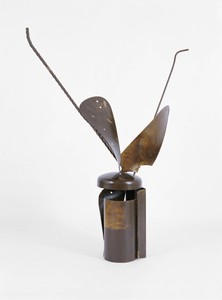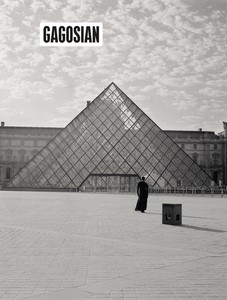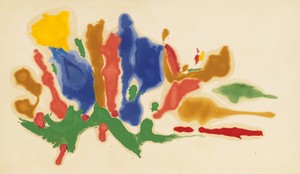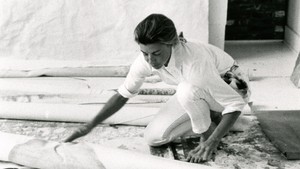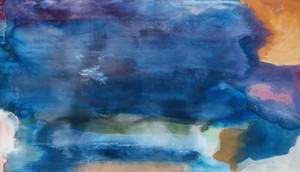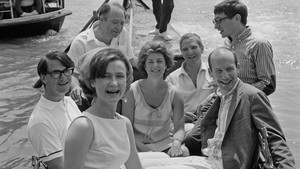A line, color, shapes, spaces, all do one thing for and within themselves, and yet do something else, in relation to everything that is going on within the four sides [of the canvas]. A line is a line, but [also] is a color. . . . It does this here, but that there. The canvas surface is flat and yet the space extends for miles. What a lie, what trickery—how beautiful is the very idea of painting.
—Helen Frankenthaler
Helen Frankenthaler (1928–2011), whose career spanned six decades, has long been recognized as one of the great American artists of the twentieth century. A member of the second generation of postwar American abstract painters, she is widely credited with playing a pivotal role in the transition from Abstract Expressionism to Color Field painting. Through her invention of the soak-stain technique, she expanded the possibilities of abstraction, while at times referencing figuration and landscape in highly personal ways. She produced a body of work whose impact on contemporary art has been profound and continues to grow.
Frankenthaler was born on December 12, 1928, and raised in New York. She attended the Dalton School, where she received her earliest art instruction from Rufino Tamayo. In 1949 she graduated from Bennington College, Vermont, where she was a student of Paul Feeley, following which she studied briefly with Hans Hofmann.
Frankenthaler exhibited her work professionally for the first time in 1950, at the Kootz Gallery in New York, when Adolph Gottlieb selected her painting Beach (1950) for inclusion in Fifteen Unknowns: Selected by Artists of the Kootz Gallery. Her first solo exhibition was presented in 1951, at New York’s Tibor de Nagy Gallery, and that year she was also included in the landmark 9th St. Exhibition of Paintings and Sculpture in New York.
In 1952 Frankenthaler created Mountains and Sea, her breakthrough soak-stain painting. She poured thinned paint directly onto raw, unprimed canvas laid on the studio floor, working from all sides to create floating fields of translucent color. Mountains and Sea was immediately influential for the artists who formed the Color Field school of painting, notable among them Morris Louis and Kenneth Noland.
As early as 1959 Frankenthaler began to be a regular presence in major international exhibitions. That year she won first prize at the Première Biennale de Paris, and in 1966 she represented the United States at the 33rd Biennale di Venezia, alongside Ellsworth Kelly, Roy Lichtenstein, and Jules Olitski. She had her first museum retrospective in 1960, at New York’s Jewish Museum, and her second in 1969, at the Whitney Museum of American Art, New York, followed by an international tour. Additional museum retrospectives have been held at the Solomon R. Guggenheim Museum, New York, and touring venues (1985, works on paper); Modern Art Museum of Fort Worth, Texas, and touring venues, including Museum of Modern Art, New York (1989, paintings); National Gallery of Art, Washington, DC, and touring venues (1993, prints); Naples Museum of Art, Florida, and touring venues, including Yale University Art Gallery, New Haven, Connecticut (2002, woodcuts); and Museum of Contemporary Art, North Miami, Florida, and touring venue, Royal Scottish Academy, Edinburgh, Scotland (2003, works on paper).

